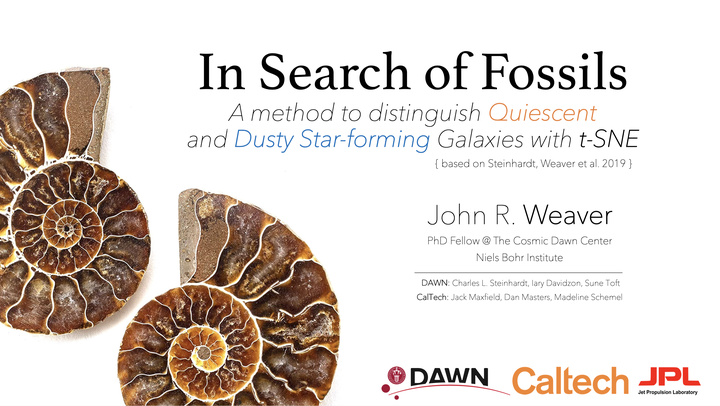In Search of Fossils: A method to distinguish Quiescent and Dusty Star-forming Galaxies with t-SNE

Large galaxy surveys have revealed a surprising number of galaxies that have ceased (or quenched) their star-formation, seen as they were when the Universe was only half its current age. However, identifying large, but clean, samples of these “quiescent” galaxies has proven difficult. Their spectral shapes, as measured by broad-band photometric measurements, are highly degenerate with dusty star-forming galaxies whose light is attenuated by thick clouds of dust and present as an interloper population. We describe a new technique for identifying pure samples of quiescent galaxies based upon t-distributed stochastic neighbor embedding (t-SNE), an unsupervised machine learning algorithm for dimensionality reduction. This t-SNE selection provides an improvement in both purity and completeness over traditional methods (e.g. UVJ, NUVrJ) and over spectral template fitting. We find that t-SNE outperforms spectral fitting in 63% of trials at distances where large training samples already exist. Remarkably, we find evidence for increased performance when applying the method to samples in the even more distant Universe.